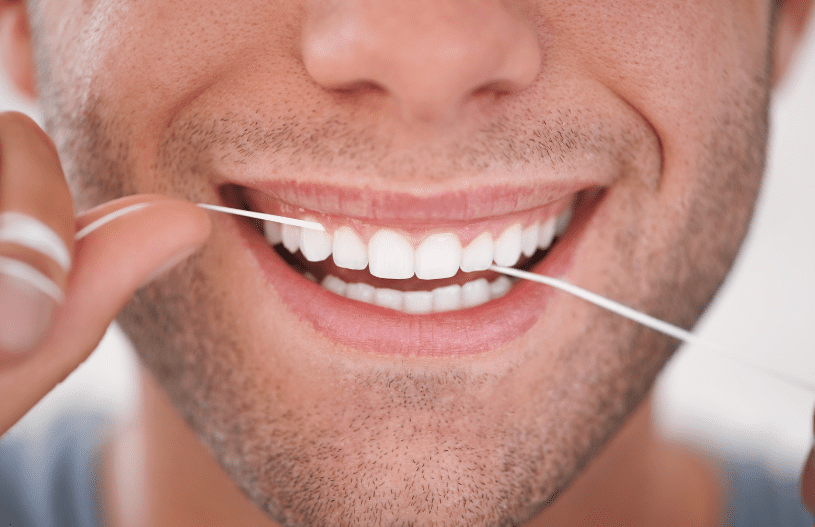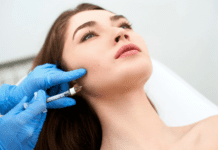
In oral hygiene, teeth are kept clean and healthy by brushing and flossing to prevent decay and gum disease. Bacteria and food build up on teeth, forming plaque, which is prevented by oral hygiene.
Purpose
Teeth cavities are caused by plaque adhering to the crevices and fissures and generating acids that slowly eat away at the enamel surface of the teeth, causing holes (cavities).
In addition to irritating gums, plaque can lead to gum disease (periodontal disease) and tooth loss.
Flossing and brushing remove plaque from teeth, and antiseptic mouthwashes kill some of the bacteria that cause plaque.
The fluoride in toothpaste, drinking water, and dental treatments also strengthens enamel to protect teeth.
Oral Hygiene can also be promoted through regular dentist visits in addition to daily oral care.
Among the preventative services he or she can provide are fluoride treatments, sealants, and scaling (removing hardened plaque, called tartar).
The dentist can provide fillings, crowns, and bridges, as well as diagnostic services such as x-rays and oral cancer screenings.
Precautions
Throughout your life, you should maintain good oral hygiene. An infant’s gums and teeth should be cleaned using a moist cloth or a soft toothbrush.
Fluoride toothpaste should be used sparingly (the size of a pea) since too much fluoride can be toxic for infants.
Adults with partial or complete dentures should also maintain good oral hygiene. Gum disease can be prevented by keeping bridges and dentures clean.
Keeping dentures in proper fit by relining and adjusting them as necessary will prevent the gums from becoming red, swollen, and tender.
Brushing and flossing should be done thoroughly but not too vigorously. Sensitive oral tissues may be damaged or irritated by rough mechanical action.
For the first few days after flossing, you may experience sore or bleeding gums. A dentist should consult if bleeding continues for more than one week.
A dentist should be consulted if any painful or abnormal condition persists after 10 days.
Description
Brushing
Every two to three hours, preferably after every meal and snack, brush your teeth with a toothbrush and fluoride toothpaste.
For effective brushing, each outer tooth surface, inner tooth surface, and the flat chewing surfaces of the back teeth must be cleaned.
Hold the toothbrush at a 45-degree angle against your gums and brush with short strokes (no more than one tooth with distance).
Holding the toothbrush vertically and gently moving the bristles at the tip (referred to as the toe of the brush) up and down is necessary to clean the inside surfaces of the front teeth.
The large back teeth’s chewing surfaces should be brushed back and forth while the brush is being held flat.
The tongue should also be brushed back-to-front to eliminate bacteria and food particles that might lead to foul breath.
Due to wear and tear, the toothbrush should be replaced every three months. Customers should select toothbrushes with soft, nylon, rounded bristles in size and form that enable them to reach all tooth surfaces if they want the most outstanding results.
Holding a toothbrush could be challenging for those who have trouble using their hands. You can place the toothbrush handle inside a rubber ball to make it more comfortable.
Flossing
By eliminating food particles and plaque from above and below the gum line and between teeth, flossing once a day can help prevent gum disease.
First, the majority of an 18-in. One hand’s third finger is wrapped in a (45 cm) floss thread. A 1-in. Next, a firm grip is established between the thumb and forefinger of each hand on the (2.5-cm) piece.
The floss is softly worked up and down while rubbed between two teeth.
The floss is gently pushed into the area between the tooth and gum at the gum line; then, it is gently curved around one tooth before moving on to the other.
A new stretch of floss is released from one hand after each tooth contact has been cleaned, and the used section is wound around the third finger of the other hand.
All teeth are flossed, followed by the space behind the final tooth. A tool known as a floss threader should be used to clean underneath any artificial teeth as well as the abutment (support) teeth of a bridge.
Dental floss can be chosen based on personal choice and is available in many different forms (waxed, unwaxed, flavored, and taped).
There are floss holders and other interdental (between the teeth) cleaning tools, like brushes and picks, available for persons with trouble handling floss.
Results
Dental hygiene can be maintained, and oral health issues can be avoided with thorough brushing and flossing. Older people may no longer believe they will lose every tooth they have in their lives. Regular oral hygiene preserves speech and eating abilities, extending life expectancy.
Key Terms In Oral Hygiene
Calculus— Unremoved plaque hardens into tartar, a yellow or brown mineral deposit.
Cavity— Decay-caused holes or weak spots in a tooth’s surface.
Gingivitis— is characterized by painless bleeding when brushing or flossing the teeth.
Interdental— The space between teeth.
Periodontal— Gum-related.
Periodontitis— The destruction of the structures that support the teeth, including the bone, is caused by gum disease.
Plaque— On teeth, bacteria form a thin, sticky, colorless film.
Tartar— Hardened yellow or brown deposits of plaque; also called calculus.
Risks
Inadequate or infrequent brushing and flossing have adverse effects. The five main issues with oral health are tooth decay, plaque, tartar, gingivitis, and periodontitis.
Plaque is a bacterial film that develops on the rough, hard surfaces of teeth. It is soft, sticky, and white. To make acid, these bacteria utilize the sugar and starch from food particles in the mouth.
If this acid is allowed to build up, it will erode the tooth’s outer enamel, irritate the gums until they bleed, and leave you with bad breath.
Brushing your teeth at least twice a day is required for good oral hygiene since plaque begins to grow anew on teeth four to twelve hours after you last brushed them.
If plaque is not routinely removed by brushing and flossing, it hardens into calculus, a yellow or brown mineral buildup.
This crusty development offers more rough surfaces where plaque can grow. Periodontal (gum) disease can develop when tartar builds up below the gum line.
An early stage of periodontal disease known as gingivitis is characterized by gum irritation and painless bleeding when brushing and flossing.
This common issue is treatable with proper dental treatment, but if it is not, periodontitis, a more dangerous form of periodontal disease, will develop.
The bone that supports the teeth is also destroyed by periodontitis, a gum condition. Without support, the teeth will become loose and can even need to be pulled out.
A dentist can identify periodontitis by looking for red, puffy, bleeding gums that are receding from the teeth and leaving more expansive spaces between teeth and exposed root surfaces that are susceptible to deterioration.
The outer layer of a tooth is destroyed when plaque bacteria generate acid, which causes tooth decay, commonly known as dental caries or cavities.
If the decay is not addressed, it can spread, ruining the entire tooth and producing excruciating agony. A dentist will remove the decay and the cavity filled with the proper dental material to restore and safeguard the tooth.
Resources
ORGANIZATIONS
American Dental Association, 211 E. Chicago Ave., Chicago, IL 60611-2678,
American Dental Hygienists’ Association, 444 North Michigan Avenue, Suite 3400, Chicago, IL 60611








